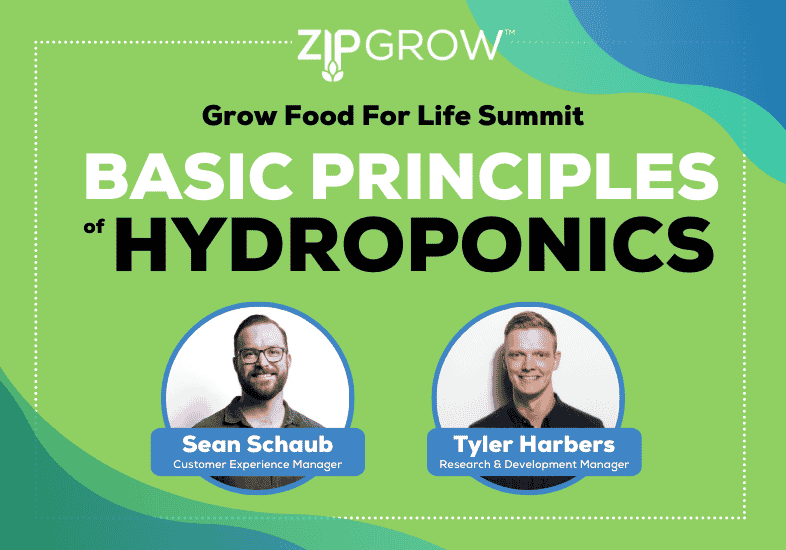In April 2022 ZipGrow had the opportunity to join Food Growers United live on the Clubhouse app for their Grow Food for Life Summit where we discussed The Basic Principles of Hydroponics.
If you missed the summit, you can listen to the full recording here where two of our in-house experts Tyler Harbers and Sean Schaub break down the basics of hydroponics and answer some questions from listeners.
Want to skip to the core info? We break it down here.
Hydroponics in a nutshell
Hydroponics is the process of growing plants without soil. All the nutrients and support are being supplied by other means.
In traditional growing, the soil provides the anchor for the plants to grow. It helps retain moisture for an extended period of time delivering macro and micro nutrients and helps with environmental stability through the thermal mass supplying beneficial microbes.
In hydroponic production, we have to replace functions that the soil would provide.
Stability
In order to provide stability for the plant there are a number of ways of doing this.
In ZipGrow Towers, we are growing in a true vertical plain. In order to anchor the root systems of the plants there is a Matrix Media inside of the Towers, it’s made from recycled water bottles and is pproximately 93% air space. It’s a really good zone of biological surface area and anchor for the roots to take hold.
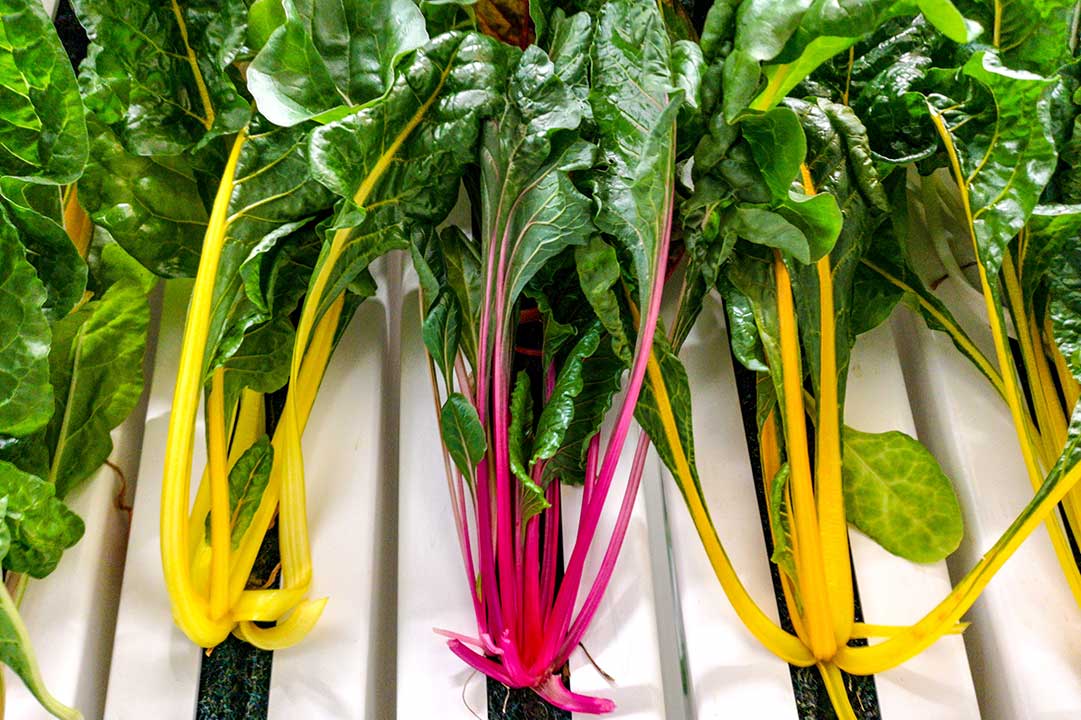
Other means would be bato buckets and various media that are available such as foam plugs, Coco Coir, polymer bound peat plugs and rockwool.
If you are growing in a NFT channel for example (more on that below), those plugs would drop into your net pot and provide the anchoring for the plant.
Supplying nutrients
The most common type of nutrients would be salt-based synthetic nutrients dissolved into a solution. These can come as dry nutrients that you mix yourself or pre-mixed liquid nutrients that various manufacturers produce. These are useful for home growers and small scale operations as they are really well formulated.
Purchased nutrients generally come with optimized micro and macro nutrients including nitrogen, potassium, phosphorus, iron and magnesium.
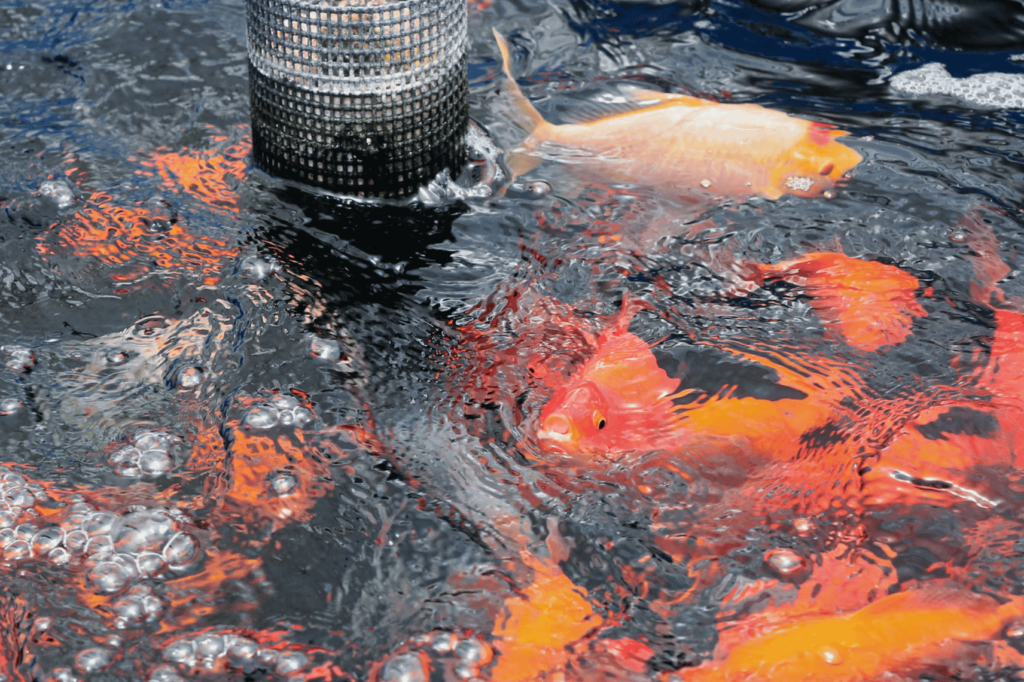
Another sub category that can be considered here is pairing a hydroponic system with an aquaculture system for aquaponic growing. The tanks of fish produce waste, that waste is used as nutrients for the plants. In cases where it is re-circulated, the plants help clean the water and the cycle continues.
Want to learn more about aquaponics ? Here is a great video to get you started.
Core types of hydroponic systems
Deep water Culture (DWC) or recirculating Deep water Culture (RDWC)
DWC is what most people think of when they envision hydroponics. They are popular in smaller scale grows due to the volume of water required to operate these systems. Plants grow with their roots in water, fully submerged but requiring aeration, so normally an air stone is placed in the bottom of the bucket to supply oxygen. There is usually very little or almost no media or substrate, some growers will use a small amount of clay pellets to get the plant started and provide structure in a mesh basket.
Common systems are DWC buckets or floating rafts systems.
A disadvantage to these systems is that they require a large supply of water, and on a commercial scale you would want to consider a chiller to keep the water cool.
Recirculating DWC systems such as those from our partner Current Culture H20 encourage optimal aeration and water temperatures and work well with larger stature crops such as tomatoes or eggplants.
Nutrient Film Technique NFT
This system is popular for leafy greens, lettuce and herbs grown hydroponically and is often used in greenhouse settings because it is easily scalable and cost effective to install, requiring significantly less water volume than DWC
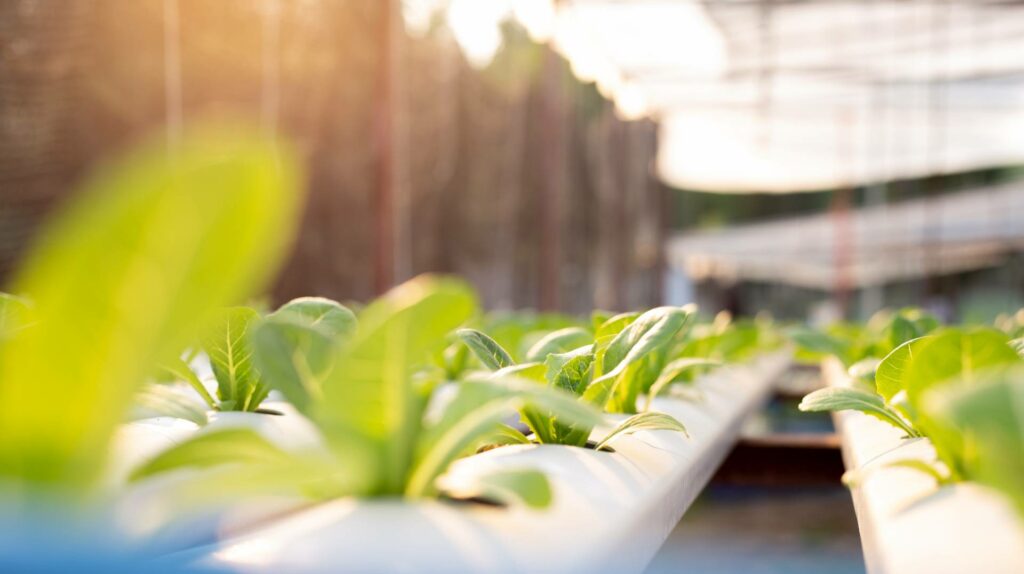
NFT systems consist of long gutters or channels with an inlet on one end and outlet on the other end. Oxygenated and nutrient dense water flows thinly on the bottom of the trough.The plant sits just above the water in a net pot, and the roots lay in the solution.
NFT systems can be stacked in vertical plains quite easily with LED lights and are pretty compact in terms of space usage.
Limiting factors are structure and space usage, they are less common for tall stature crops as it would require a lot of trellising, but it can be done.
Aeroponic systems
In aeroponic systems, the roots are suspended in a type of reservoir structure that can contain misted or fogged water.. Plant roots are misted or fogged with nutrient dense oxygenated water, which then is recirculated to be reused repeatedly.
These are popular for home kits such as small table top kits that grow herbs, and in greenhouse systems they are becoming popular for cloning, as well as growing full crops of lettuces and culinary herbs and strawberries too.
Drip System
These systems including ZipGrow Towers use a drip emitter or emitter of sorts that trickles water down constantly keeping the roots wet and the medium moist.
Due to the upright nature drip systems and ZipGrow Towers make the best use of sunlight in a greenhouse setting they receive proper light reflection and airflow over the entire crops
Many media based systems are drip systems; the media supports the plant roots and structure.
ZipGrow Towers can be fitted indoors and in a greenhouse setting. In larger scale operations, they are quite often paired with other systems.
Considerations for soilless growing
How nutrients react
Soil based growing offers a buffer to the plant. Whereas in soilless growing much of that is held in the water and is transferred in a different way. When dosing nutrients you need to be careful not to overdose so that you don’t burn the root zone.
When making nutrient changes you will see faster changes in hydroponic growing than you would in soil. If a plant is grown in the ground, you can over-do or under-do the nutrients a little and it could be up to a week before you see any issues. In hydroponics if your crop is lacking in a particular nutrient you will see that very quickly and you will need to make quick decisions to react to that.
If you are mixing a pre-mixed fertilizer at the recommended dose, a lot of the time, these deficiencies are quite often environmental issues rather than a nutrient solution issue.
For example we often see tip burn on lettuce grown indoors, it’s a calcium deficiency which is often the result of a humidity problem. This can be resolved by increasing the airflow or bringing down the humidity in the room, very rarely is there not enough calcium in the solution and it’s more likely that the environment is not tailored to meet the plant.
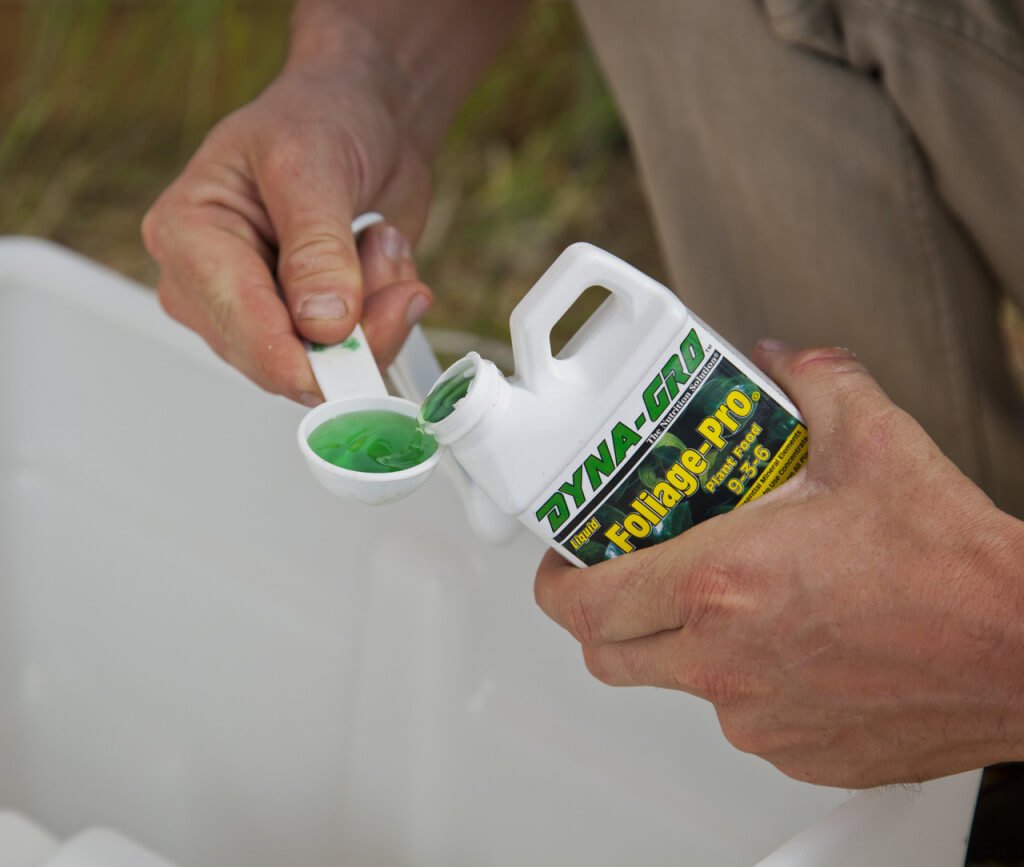
This comes back to Liebig’s Law of the minimum, which is discussed more at 40:00 in the recording.
Measuring fertilizer and EC
Monitoring electrical conductivity (EC) is a way of measuring the fertilizer in hydroponic growing.
To simplify this:
Most fertilizers are present as salts in the water.
Pure water doesn’t conduct electricity, but salt does.
EC is measured in units called Seimens per unit area (e.g. mS/cm, or miliSeimens per centimeter),the higher the dissolved material in a water or soil sample, the higher the EC will be in that material. Therefore, the more salt the higher the EC value.
You can then make adjustments higher or lower by following best practices for crops and adjust accordingly.
PH in hydroponics
The PH of a solution is how acidic a solution is. What it’s really measuring is hydrogen and how it’s reacting in that water.
Completely pure water has a pH level of 7, which is exactly in the middle of the scale, making the water neutral. A low PH is an acidic solution and a high PH is a basic solution.
PH is important as it influences how nutrients are available to plants. If your PH isn’t correct, you may see a deficiency in your crops.
A good example of this is iron, if your PH is anywhere lower than a 5.8 you’re actually in a zone where it’s too much iron and toxic to the plant. In general you will grow most hydroponic crops in a range of 5.8 to 6.5.
There are obviously some exceptions to this and you would want to have an understanding of best levels before you get started with a new crop.
In aquaponics you are balancing keeping fish alive, so you would have to go to something more neutral such as 6.8 to 7.2.
If you are just getting started you may want to download our Best Crops for Hydroponics guide here, it provides recommended EC and PH levels for the most popular crops.
You can also learn more here in our beginners guide to PH in hydroponics video.
Water temperature and quality
Keeping the temperature in the right range is important for plants, lower temperatures tend not to grow algae or promote as much bacteria growth and help to keep your room from becoming too humid.
Another factor to consider is that temperature affects the oxygen levels in water, quite often in a hydroponic system if you use an air stone pump it will help oxygenate the water and keep oxygen at the roots. There’s a direct correlation between how well a plant grows, how well it takes up nutrients and how much oxygen is available to it in the water.
If your water has high EC coming in then it will affect your nutrients so you want to make sure you have the purest water. Reverse osmosis is very important on a commercial level to maintain pure levels. Hobbyists can manage without a reverse osmosis unit as long as they are swapping out nutrient solution quite often, but if you have very hard water you won’t be able to get plants to grow hydroponically. The best work around for this would be to use distilled water or rain water.
Watch for an upcoming blog from Food Growers United and ZipGrow specifically on water quality.
Also in this episode information and Q&A on:
09:40 – Plastics and concerns with leaching.
17:00 – History of hydroponics
27:30 – Can ZipGrow systems be used in a home?
32:50- Making hydroponics and aquaponics accessible for all
38:35- Consideration of all factors. Taking a holistic approach to the growth of a plant.
41:00 VPD- Humidity and temperature VPD
43:40 – Advice for growing microgreens without plastics
58:40 – Sustainable solutions – longevity of products, biodegradable growing media including Growfoam® plugs.
51:00 Macro and Micro Nutrients
1:02.40 Making your own fertilizers & nutrient solutions
1:10.00 Food supply chain – empowering people to grow locally
ZipGrow provides many free resources for beginners through to advanced growers
Learn more about Hydroponics on UpStart University– try a 7-day free trial
Visit and subscribe to our YouTube channel
Thanks to Food Growers United for inviting us to their summit- you can check them out on the Clubhouse App and watch for more upcoming episodes featuring ZipGrow experts.

